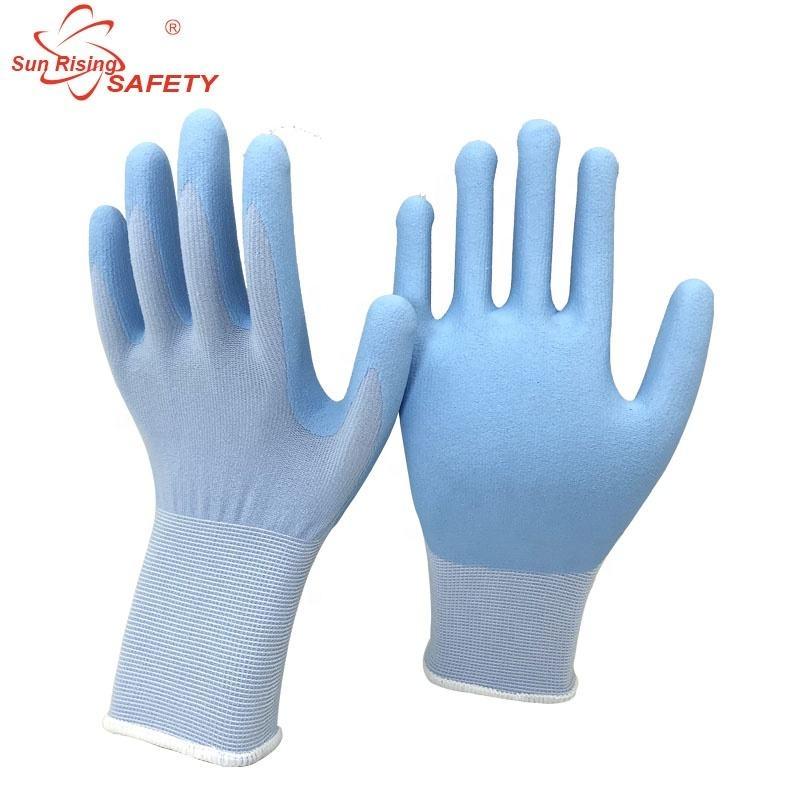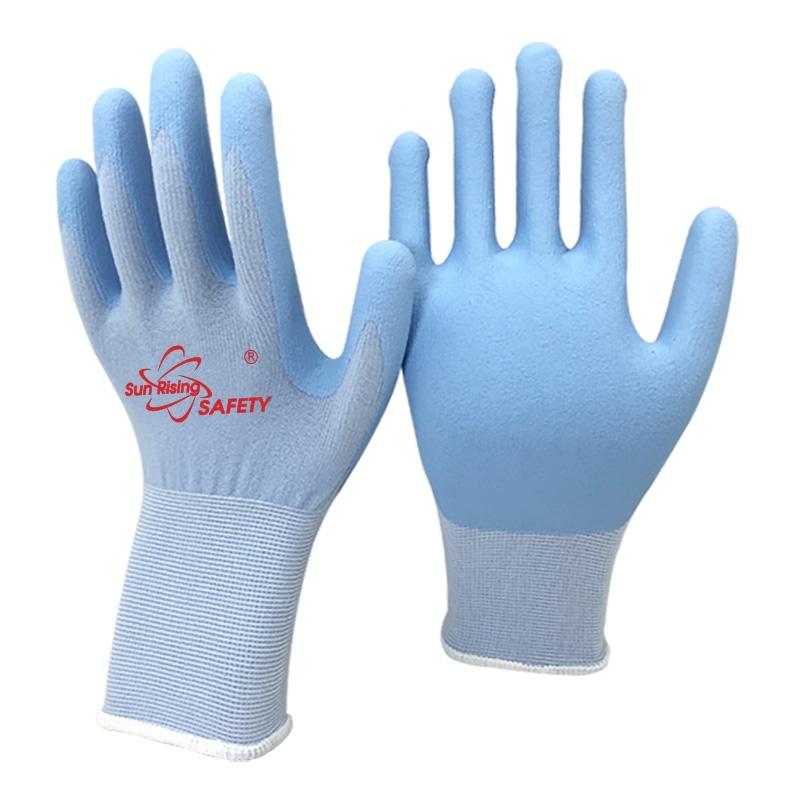Subscribe for NMSafety News
How the Right Nitrile Coated Glove Prevents Skin Irritation
By hqt

The Nitrile Coated Glove is a fabric glove with a thin nitrile layer on the palm and fingers. This coating resists oil, improves grip, and stays flexible. Teams use it for handling parts, tools, cartons, and wet or oily surfaces. Yet many workers still report itchy, red hands after long shifts. Why? Often the glove is close, but not quite right. In today’s post, we reveal how the right choice prevents skin irritation – and the small details that make a big difference.

Why The Right Nitrile Coated Glove Prevents Skin Irritation
Most irritation at work has three simple roots: trapped sweat, relentless friction, and stray contaminants that linger on the skin. The right Nitrile Coated Glove tackles each one without asking the wearer to slow down. At SRSafety, our palm uses breathable microfoam nitrile that allows moisture to escape rather than pool under the coating. Drier palms mean fewer soft, over-hydrated patches, less itching, and far fewer end-of-shift rashes. The microfoam also delivers a predictable, non-tacky grip in dry, wet, and oily tasks. When tools don’t slip, workers don’t have to squeeze as hard – lower grip force translates into less rubbing, fewer hot spots, and a reduced risk of blisters.
Fit matters just as much as coating. A stiff glove makes the hand fight the fabric all day. Our 15-gauge nylon–spandex liner bends with every reach and pinch, so seams don’t dig in and the fabric doesn’t chafe. The thin profile preserves dexterity for fast part picks, wire handling, or trigger work, while the resilient knit keeps its shape after repeated flexing and wash cycles. Add our anti-bacteria treatment and you address another quiet irritant: microbes that thrive on damp skin during long shifts.
✅ Typical Irritants Our Design Helps Avoid
• Sweat trapped under non-breathable coatings
• Friction from bulky seams and poor fit
• Residual oils and grime that stay on skin between tasks
The result is simple but powerful: hands stay cooler, drier, and calmer – shift after shift – so teams can keep moving without the nagging distraction of irritated skin.
Inside SRSafety: Materials, Fit, And Hygiene
We design each Nitrile Coated Glove for real floors, not showrooms: warehouses, assembly lines, construction sites, maintenance bays, and field work. Our approach centers on three pillars – breathability, flexibility, and cleanliness – because that’s where the industry feels the most pain.
- Breathable Microfoam Nitrile
Microfoam nitrile is full of microscopic channels that let air circulate while preserving grip. That airflow limits moisture buildup, while the textured surface maintains control on wet rails, oily housings, and damp cartons. The big win for skin: steadier grip means less clenching, which reduces shear against the palm and the tiny abrasions that become tender under sweat.
- 15-Gauge Nylon–Spandex Liner
A 15-gauge knit hits the sweet spot for all-day wear. It’s soft, elastic, and close-fitting, so it won’t bunch at the knuckles or pinch fingertips. The liner rebounds after flexing, helping the glove keep its contour through hundreds of grasp-release cycles. That snug, anatomical fit lowers friction, protects the dorsal hand from rubbing at folds, and keeps fine tasks precise.
- Hygiene That Lasts Through Long Shifts
Extended wear is common in busy plants and on remote jobs. Our anti-bacteria treatment supports fresher gloves through long days and short breaks. While these are not medical devices, cleaner glove interiors reduce one more pathway to irritation: prolonged contact with microbes on damp skin. It’s a small change that your crews will notice by week two, not just hour one.

Across industries, the same choices solve different pain points. In agriculture and construction, breathability calms sweaty palms under summer heat. In automotive and manufacturing, confident oily-grip prevents tool slip and the over-gripping that rubs skin raw. In warehousing and maintenance, the flexible liner prevents seam rub during repetitive picking and scanning. To fit diverse teams, we offer sizes from 7/S through 12/3XL so each worker finds a secure, irritation-reducing fit.
Choosing And Rolling Out Your Nitrile Coated Glove
Start with the work, not the catalog. If your teams handle oily parts or damp packaging, choose a Nitrile Coated Glove with microfoam technology for control without grit that can abrade skin. If heat and humidity are routine, prioritize breathability and a 15-gauge liner to keep palms drier. For long shifts, insist on easy finger flexion and coatings that grip without stickiness; reducing the squeeze is one of the fastest ways to cut friction-related irritation.
Rollout logistics matter. SRSafety supports enterprise programs with straightforward purchasing parameters that keep projects on schedule. We recommend planning around a minimum order quantity of 12,000 pairs and a 60–120 day lead time, aligning production and shipping to your changeover windows. Need consistent branding across multiple sites? We provide customization for logo, color, and packing, which simplifies training, improves compliance, and helps safety managers spot the right glove at a glance.
Comfort promises are easy to make and hard to prove. The proof shows up in week three: fewer complaints about prickly palms, fewer band-aids on the tool crib counter, and steadier output on repetitive stations. Breathability that still grips in oil, a liner that bends without biting, and hygiene support that keeps gloves fresher – these are the quiet features that prevent red, itchy hands and keep experienced operators on the line.
✅ Buyer Checklist
• Choose breathable microfoam nitrile for dry/wet/oily tasks
• Specify a 15-gauge nylon–spandex liner for flexibility and resilience
• Confirm size coverage (7/S – 12/3XL) to fit every crew member
• Ask for hygiene features to support extended wear
• Align MOQ and lead time with rollout plans; lock in customization early
If you’re evaluating options, invite your operators to try the gloves on their toughest tasks – oily bearing swaps, wet carton picks, hot-day roof work. Watch the grip, check the hand pressure, and ask about skin feel at break. You’ll see how a well-built Nitrile Coated Glove reduces the very friction and moisture that drive irritation.
Call To Action: Ready to lower complaints about sweaty, itchy hands and raise glove compliance? Talk to SRSafety about a Nitrile Coated Glove program shaped to your tasks, size range, and branding. Let’s put breathable grip, flexible comfort, and cleaner wear into your team’s hands – and say goodbye to skin irritation on the job.
Next: Not Next
